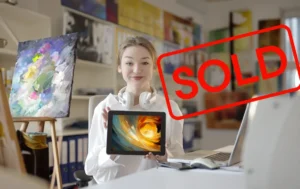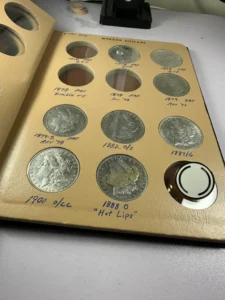You’re scrolling through Instagram, living your best soft life, when bam—you see your art printed on a tote bag, worn by an influencer, posted by a brand you’ve never worked with.
Cue the full-body rage.
You zoom in. You double-check. Yup, that’s your illustration. No tag. No credit. No contract. No coin.
This guide is here to help you:
Understand your legal rights
Take actionable steps (without panic)
Protect your creative work going forward
Why Art Theft Happens (and Why It’s Not Your Fault)
Let’s be real: brands should know better. But sometimes they:
Steal art, thinking you’ll never notice
“Find it online” and assume it’s free to use
Outsource to shady designers who rip artists off
TL;DR: The internet is wild, and some companies are out here treating Pinterest like Shutterstock.
But don’t blame yourself for posting your art online. You deserve visibility and protection. Let’s get into what you can do.
Step 1: Confirm It’s Your Art
Sometimes brands imitate a style. Shady? Yes. Illegal? Not always.
But if the artwork is:
Identical or near-identical
Copied from your portfolio or social post
Includes your signature, characters, color scheme, and layout
…then you have a legit case of copyright infringement.
Things to Check:
Do you have the original file or sketch?
Can you prove when you created it? (timestamps, social media posts, etc.)
Is it a direct use or slightly “remixed”?
Step 2: Document Everything (Before They Delete It)
This is your digital receipts moment. Before you contact anyone:
Screenshot and Save:
The product using your art (website, e-commerce, Instagram)
Comments tagging you
Posts by influencers or customers
Any correspondence
Use tools like the Wayback Machine (archive.org) to capture web pages that may disappear.
Pro tip: Organize everything in a folder with timestamps. If this goes to legal, you’ll thank yourself later.
Step 3: Write a Professional “Cease” Email
Now comes the adulting part. No, not angry DMs. A real, documented message.
Sample Email Template:
Subject: Unauthorized Use of Artwork—Immediate Action Required
Dear [Brand Name/Manager],
I’m [Your Name], the original artist and copyright holder of [“Artwork Title”], which is currently being used without my permission on [product/social media/link].
This use is unauthorized and constitutes copyright infringement.
Please remove all instances of my artwork immediately. If you believe you have obtained rights to use it, please provide documentation within 72 hours.
Failure to act may result in a DMCA takedown or further legal action.
Sincerely,
[Your Full Name]
[Your Website/Instagram]
[Your Contact Info]
Stay calm, clear, and confident. Legal energy only.
Step 4: File a DMCA Takedown (If They Ignore You)
If the brand doesn’t respond or acts shady, file a DMCA takedown with the platform hosting their content.
Where to File:
Instagram/Facebook: Meta IP Reporting
Etsy: Etsy IP Report
Amazon: Amazon Infringement Form
Pinterest: Pinterest Copyright
Website Host: Look up their hosting provider on WhoIs Lookup
These platforms take copyright infringement seriously, but you must submit proof and complete their form.
You’ll Need:
Proof of original creation (timestamps, links)
Link to the infringing content
Statement confirming you didn’t give permission
Step 5: Lawyer Up (If It’s Serious)
If the brand is:
Large and well-funded
Selling high volumes of products
Ignoring takedowns or ghosting you
…it might be time to contact a lawyer.
Where to Find IP Lawyers:
Volunteer Lawyers for the Arts (VLA)
Artists’ Legal Aid Organizations
LegalZoom or Avvo for consultations
Some lawyers offer a free initial consultation or work on contingency, especially if your case could lead to a compensation settlement.
Should You Call Them Out Online?
You’re tempted to post: “Y’ALL. THIS BRAND STOLE MY ART.”
But wait…
DO:
Post factual, calm updates
Show your followers how to report stolen content
Share your process to educate others
DON’T:
Make unverified claims
Encourage a harassment mob
Post private emails or info
If you DO go public, make sure it’s after you’ve taken legal steps. Let facts speak louder than drama.
Quick Legal Facts Every Artist Should Know
You Own Your Art the Moment You Create It
You don’t need to register it first (but it helps). U.S. and many international copyright laws protect original work at creation.Registration Helps You Sue for Damages
If you register your art with the U.S. Copyright Office (or your local equivalent), it boosts your legal power and gives you standing in court.You Can License, Not Sell Ownership
Licensing means someone uses your work, but you still own it. Never sign away full copyright unless the check is six digits. (Seriously.)
Common Mistakes to Avoid
Ignoring it, thinking it’ll go away (they’ll do it again!)
Raging on social without receipts
Sending a vague DM instead of a formal email
Failing to follow up
Not learning how to protect future work
How to Prevent This in the Future
Always Sign Your Work – Name, logo, or digital watermark.
Keep Creation Records – Sketches, time-stamped files, and process videos.
Use Licensing Terms on Your Website – Add a clear “Art Licensing” or “Copyright Info” page.
Consider Copyright Registration – Especially for bestsellers or valuable pieces.
Real Talk: Art Theft Is Exhausting. But You’re Not Powerless.
Your creativity is your currency. When someone steals your art, it feels personal—because it is. But thanks to copyright law, DMCA protection, and a growing community of woke artists, you’re not alone.
Remember:
You deserve to be paid, credited, and respected.
And every time you protect your work, you’re also protecting the next generation of creators coming after you.






